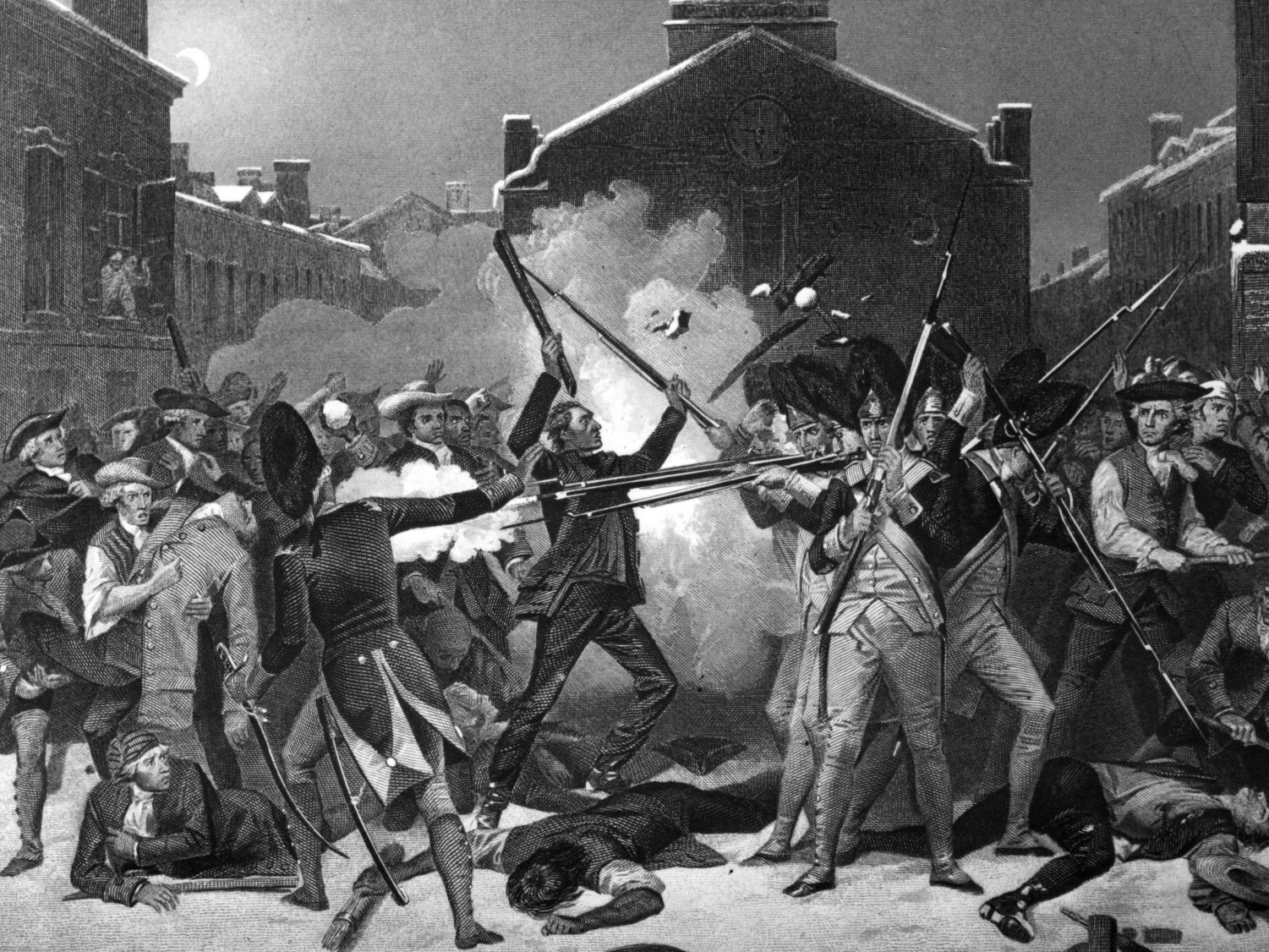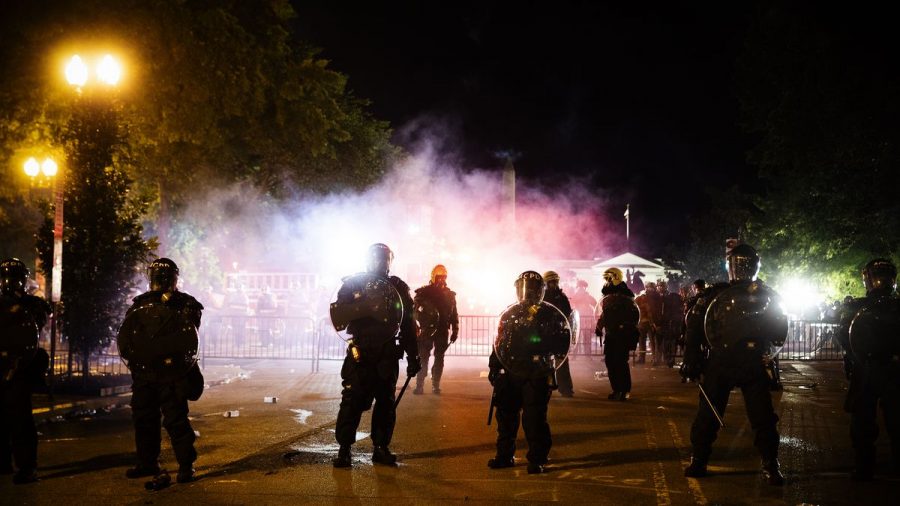Riots Through a Different Lens
Civil unrest should be understood as a symptom of systematic oppression, not as a tool to combat it.
Since its colonial days, American public life has been marked by episodes of civil unrest.
The civil unrest that has marked much of 2020 has provoked pundits on both the left and the right to declare that civil war in America may be imminent. But a wider view of history may suggest otherwise, and it may teach us to better understand our current predicament.
Riots have marked America since the country’s very beginning. Perhaps one most notably sewn into the fabric of American history is the Boston Massacre, in which British troops fired on a crowd of American protestors in a city fraught with tensions over British tax laws. Other notable riots in American history include the New York Draft Riots and Haymarket Square Riot, both in response to work-related grievances in the mid to late 19th century; the Zoot Suit Riots of 1943 during which white military personnel targeted Black, Filipino, and Mexican men in Los Angeles; and the famous Stonewall Riots in 1969, when police and club-goers clashed outside of a gay bar, paving the way for LGBTQ+ rights. Race-related riots have also been frequent, many occurring as a reaction to police violence. These include the Stono Rebellion, the riots of the Red Summer of 1919, the Detroit Riots in 1967, and the Los Angeles Riots in response to the acquittal of the officers who murdered Rodney King.
These riots did not appear out of thin air. Widespread anger is rarely baseless—communities full of comfortably employed people with full bellies do not see the collective rage and violence that marks periods of civil unrest. But are riots effective in combating the issues from which they stem? The issue is hotly contested—there is evidence to suggest that they often economically harm the communities in which they occur, while there are also historical examples of their success, including the riots after MLK’s death that led to the passing of groundbreaking civil rights legislation in the form of the Fair Housing Act of 1968.
This past summer has seen many riots catalyzed by the killing of George Floyd, reigniting the debate over the effectiveness of violence and looting in bringing about change. Those opposed to the Black Lives Matter movement often cite property damage and Martin Luther King Jr.’s tactics to prove that peaceful protest is the only useful way to fight oppression, while supporters of BLM argue that the riots have led to victories within the movement, including the reopening of Elijah McClain’s case and banning of no-knock warrants in various states following the death of Breonna Taylor.
But while both of these views see riots as either effective or ineffective solutions to a problem, riots shouldn’t be seen as a potential solution at all—rather, they are the inevitable, very human reaction to state-condoned violence and oppression and should be treated as an indication to tackle underlying problems instead of as a means to do so.
Riots are not, as many believe, mindless, unfocused mob rule—they are the mobilization of many individuals who share a common enemy or cause and who take to the streets for their movement specifically. When a riot takes place, group polarization and anonymity come into play—that is, people lose their sense of self when in a crowd of like-minded people, leading them to make more extreme decisions. All that is necessary to start a riot is underlying rage and frustration and a catalyst, like a blaze beginning with just a pile of tinder and a spark. In the case of the recent surge in the BLM movement, the tinder is the anger within the Black community built up over centuries of systemic racism, like a powder keg pressurized to the point of explosion.
Humiliation is a recurring theme within this anger. There is humiliation in being slammed over the hood of a car by a police officer as your white counterparts stand by, untouched. There is humiliation in being denied a job just for having an African American-sounding name, in growing up and always seeing people with your skin color relegated to the roles of villains and sidekicks. There is humiliation in being the only person with your skin color in a boardroom, in listening to a backhanded compliment from a coworker that you “speak so well for someone like you,” in feeling the burning stares of white classmates who have never seen hair like yours. There is humiliation in repeated embarrassment and rejection within white society of your personhood, and there is humiliation every time you have to convince someone that your pain exists.
Those who condemn the riots yet claim to support the BLM movement in all other aspects miss the frustration at the very heart of the Black community. The riots are a symptom of widespread oppression, and denying their validity denies the right of Black Americans to be angry at their own oppression and mistreatment and to express themselves in accordance with that rage.

Attempting to label riots as effective or ineffective treats them as a political tool, but that perspective completely misses what riots are: a natural response to generations of pent up anger and dehumanization. When someone cries out after their arm is broken, they do not believe their own cry will get them to the hospital or heal their injury—they are simply reacting, responding naturally as a human who feels pain. Pain within the Black community stretches back centuries, and it runs far deeper than a broken arm, weaving itself through the nerves and sinews of society like a disease that has been allowed to ravage this country for far too long.
Many condemn one type of violence while ignoring the other—that is, systemic, state-sanctioned violence whose victims respond with their own fervent defense. Slavery is violence. The war on drugs is violence. Police brutality is violence. Redlining, segregation, mass incarceration, racial achievement gaps, and micro-aggressions are violence. Yes, riots are violence too, but they occur at the other end of the balance of power, an outcry among African Americans over scales that are so overwhelmingly stacked against them. Author Ta-Nehisi Coates wrote eloquently in 2015 in response to the Baltimore Riots about the government’s response to civil unrest:
When nonviolence is preached as an attempt to evade the repercussions of political brutality, it betrays itself. When nonviolence begins halfway through the war with the aggressor calling time out, it exposes itself as a ruse. When nonviolence is preached by the representatives of the state, while the state doles out heaps of violence to its citizens, it reveals itself to be a con. And none of this can mean that rioting or violence is “correct” or “wise,” any more than a forest fire can be “correct” or “wise.” Wisdom isn’t the point tonight. Disrespect is. In this case, disrespect for the hollow law and failed order that so regularly disrespects the community.
There is an attempt by many, often those who have the most to lose should widespread civil unrest overturn the existing social hierarchy, to channel the anger evident in riots into more manageable outlets. Peaceful protest is lauded as the only way to achieve equality—even though peaceful protest is often met with similar discontent—because peaceful protest does much less to destabilize the status quo than does rioting. The Founding Fathers feared “mobocracy” as much as current politicians and CEOs fear the looting of a Target, and those in power have influenced large parts of the public into fearing their own collective power.
Riots shouldn’t be measured by their “productivity,” by the laws passed or cases resolved in their wake. Riots shouldn’t be seen as a tool for fighting oppression, or a replacement for the widespread reorganization of society that is needed to combat systemic racism. Riots should be observed and reported on, rioters acknowledged as human beings exercising their right to feel angry over mistreatment, and the underlying causes of riots sought out and addressed.
The Kerner Commission, a report identifying poverty, unemployment, voter suppression, violent policing, and other forms of institutionalized racism as major causes behind the unrest in cities across America during the summer of 1967, states, “What the rioters appeared to be seeking was fuller participation in the social order and the material benefits enjoyed by the majority of American citizens. Rather than rejecting the American system, they were anxious to obtain a place for themselves in it.”
All non-Black Americans should be examining and working to dismantle the institutions that keep our Black brothers and sisters from enjoying the opportunities we are afforded, not berating them for demanding their rightful seat at the table. Malcolm X once said, “You can’t separate peace from freedom because no one can be at peace unless he has his freedom.” This has been echoed in recent chants from the BLM movement of “No justice, no peace.” As long as oppression continues, riots are inevitable.
Perhaps what is to be most feared is not the riots themselves, but a world in which Black Americans do not riot in response to the killing of their family members on the streets, the locking up and exploitation of their brothers and fathers, and the continued weight of chains that have yet to be lifted.

Sam Podnar is a senior at NASH. When she's not writing, she enjoys baking, reading, and talking too much about local politics.



